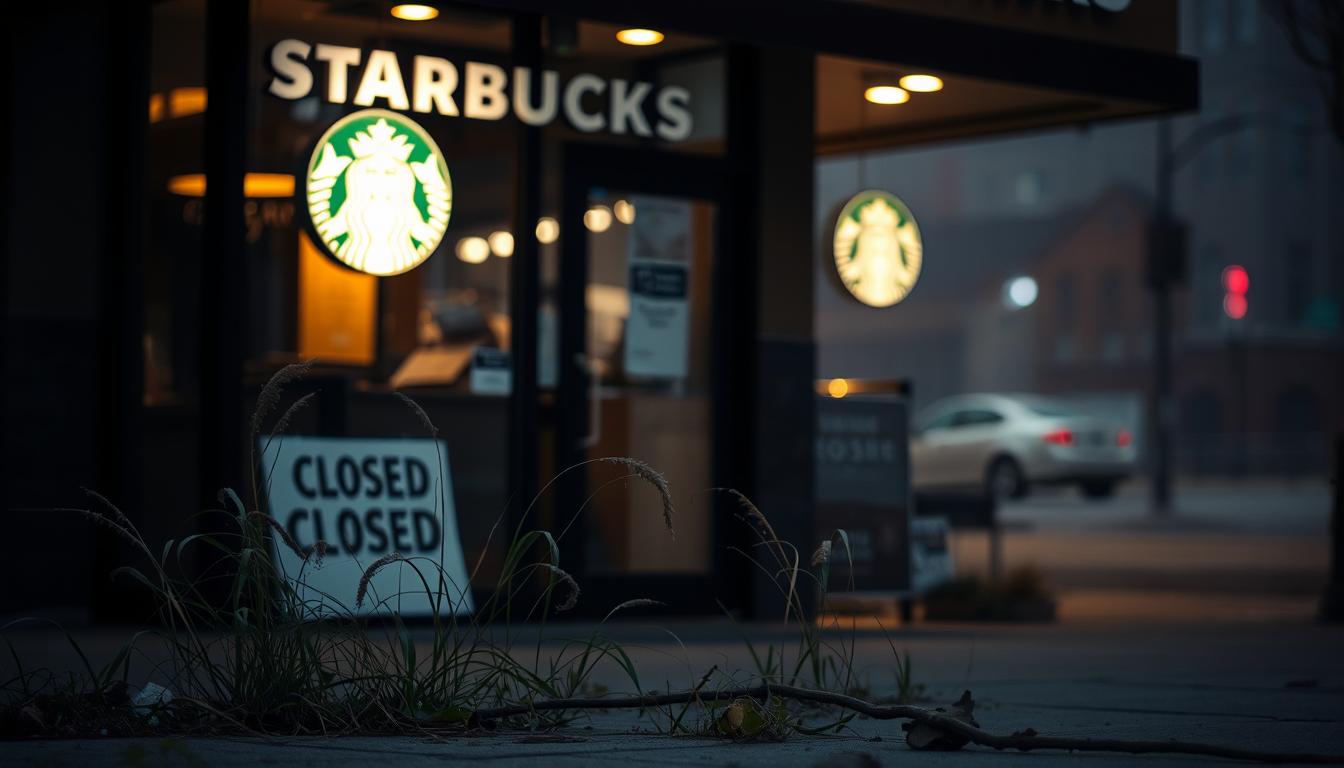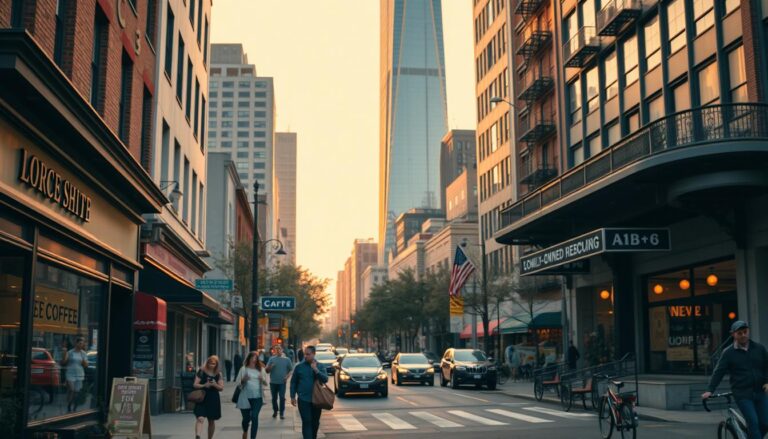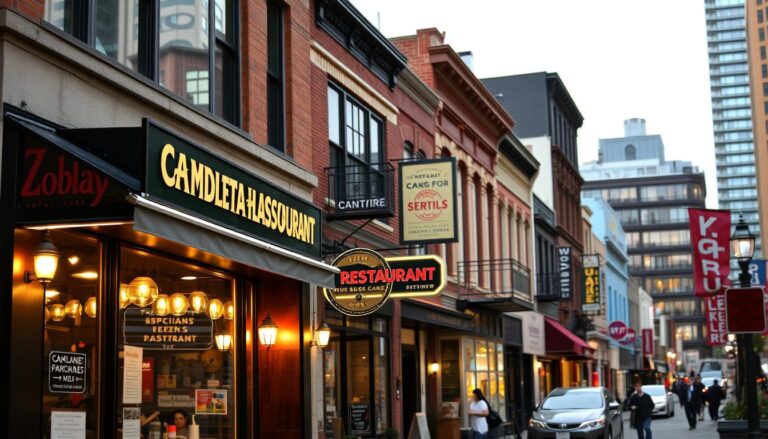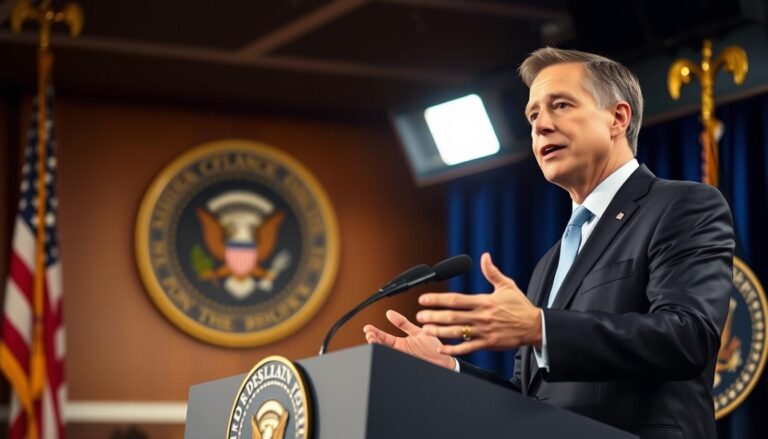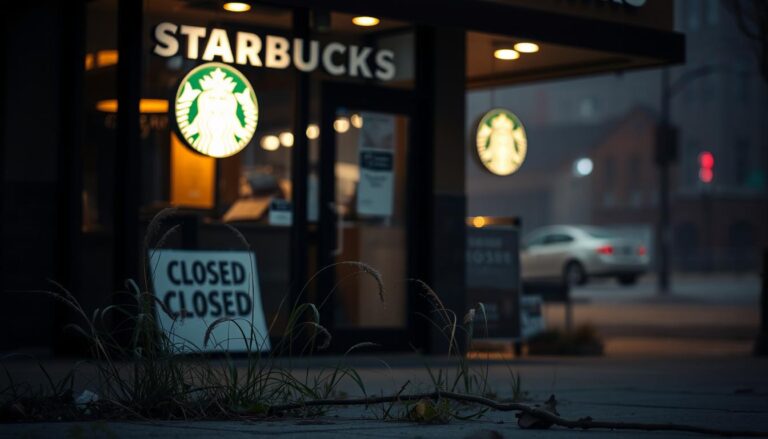A major reshuffle is underway as the company announced a $1 billion plan to reshape its North America footprint. CEO Brian Niccol says about 1% of company-operated sites will go, part of a move to invest in stronger, more welcoming cafés.
The action spans dozens of locations in New York, where 34 spots across all five boroughs are set to end service. Industry tallies put the national impact between roughly 430 and 520 U.S. outlets, with one compiled count at 467 confirmed closures.
What matters is how the chain plans to shift toward in-café experiences and smarter investments. The change affects employees, high-traffic corridors, and customers who rely on nearby coffee routines.
Key Takeaways
- The company announced a $1 billion restructuring led by CEO Brian Niccol.
- About 1% of North America locations will be removed, roughly 430–520 U.S. outlets.
- New York is a major focus, with 34 locations across five boroughs closing.
- Moves aim to redirect investment toward better in-café experiences.
- Closures may change neighborhood service options and daily routines.
Latest on Starbucks store closures across the U.S. right now
Executives confirmed a targeted 1% reduction in North America locations, with actions expected by the end of the fiscal year. That guidance followed a months-long review of sluggish sales in recent years and sits inside a broader $1 billion restructuring plan.
The company says roughly 900 employees are affected; many will be offered transfers or comprehensive severance packages. Leadership also pledged to uplift more than 1,000 locations and to grow again via a pipeline of openings in fiscal 2026.
Industry watchers translate 1% to about 430–520 closures nationwide. One dataset identified 467 confirmed closures in a recent wave, highlighting how official statements and third-party counts can differ.
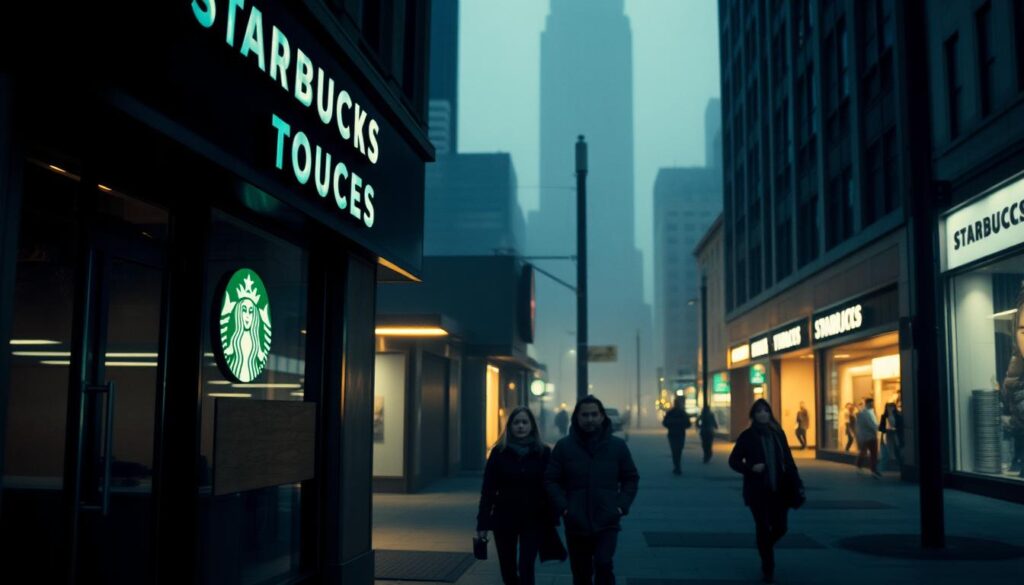
- Confirmed: ~1% reduction by fiscal year end and workforce supports for affected employees.
- Context: review of performance over recent years drove the changes.
- Outlook: upgrades at 1,000+ locations and new openings planned for fiscal 2026.
New York locations shutting down: where Starbucks is closing in NYC
This wave of reductions touches key Manhattan avenues and several Brooklyn and Queens corridors. Thirty-four locations across all five boroughs are included, highlighting how busy neighborhoods can still fall short of new format criteria.
Manhattan hotspots affected include corridors such as 34th Street, University Place, Columbus Avenue, Varick Street, Lexington Avenue and Broadway. Notable sample addresses are 330 W. 34th St., 111 University Place, and 159 Columbus Ave.
Brooklyn, Queens and beyond list Atlantic Avenue, 45 Hoyt St., 309 Gold St., 395 Flatbush Ave., and 3 Flushing Ave. at the Brooklyn Navy Yard. Queens examples include Astoria’s 21-03A Broadway and Long Island City’s 21-02 49th Ave.
- New York will see 34 closures across five boroughs, affecting high-visibility corridors.
- Manhattan addresses: 330 W. 34th St., 111 University Place, 159 Columbus Ave., and others on Sixth Ave. and Lexington Ave.
- Brooklyn and Queens examples: 45 Hoyt St., 395 Flatbush Ave., 21-03A Broadway, 21-02 49th Ave.
Commuters and regular coffee patrons should note that changes on routes like 34th Street and University Place may alter morning routines. Remaining nearby options could see higher volume during peak times, so plan alternate stops when possible.
starbucks stores closing nationwide: counts, types of stores, and states hit hardest
A targeted footprint reduction is underway, and analysts peg the national impact in the mid-hundreds. Industry watchers equate the 1% North America pullback to roughly 430–520 closures, with one compiled list noting 467 confirmed locations in a recent week.
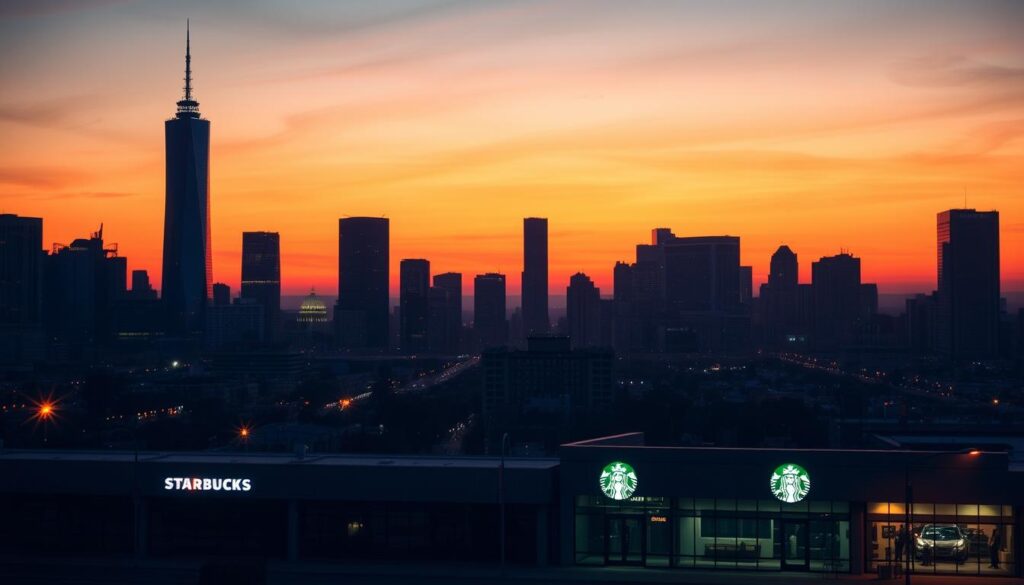
About 1% of North America locations: 430–520 closures reported by industry watchers
Third-party tracking places the national total near the 430–520 range. That translates to a fast-moving reshuffle across multiple markets and formats.
Mobile-order and pick-up-only stores: 80–90 locations across 23 states targeted
Pickup-first formats are a key focus. The plan targets about 80–90 mobile-order and pick-up-only sites across 23 states, with conversions or shutdowns expected through 2025–2026.
Employee impact: roughly 900 roles affected, transfers and severance in motion
Internal guidance notes roughly 900 employees will be affected. The chain says it will prioritize transfers and offer severance when relocation isn’t feasible.
- The hardest-hit states include California, Illinois, New York, and Texas.
- Some pickup locations may be converted into full-service cafés with seating.
- Customers should check the app for fast updates as statuses change during conversions.
Why Starbucks is closing stores: CEO strategy, sales review, and the “third place” bet
The company says the shift follows a multi-year assessment that prioritized investments where cafés drive the most value. CEO Brian Niccol tied the $1 billion plan to a broad review of sluggish sales over recent years.
Back to Starbucks is the operating bet: elevate in-café connection, speed up service, and invest in physical upgrades. Leadership wants drinks out in four minutes or less while keeping barista hospitality intact.
“Back to Starbucks”: connection, speed, and upgrades
This effort targets pickup-only formats judged too transactional. The company will reallocate resources toward cafés that can host customers and show consistent returns.
Market pressures: grab-and-go vs. sit-down experience
- Drive-thru specialists push speed and convenience.
- Indie coffee concepts compete on craft and atmosphere.
- Result: a strategic trade-off between convenience and community.
Analysts say the strategy aims to protect margins and clarify the brand’s “third place” identity. The leadership wager is that better in-store experiences will win back customers who value human connection over pure convenience.
What to expect next for the coffee chain and your local store
In the months ahead, some neighborhood sites will be converted, reopened, or removed as the brand reshapes its footprint and works to finish about 1% of North America reductions by the fiscal year end.
Expect ongoing status updates on locations and app notices about temporary work. Some pickup-only sites will become full-service cafés, while a smaller share face permanent closures, with new openings planned in fiscal 2026.
If your nearest store is affected, nearby options may get busier. Employees may transfer to nearby outlets to help keep service steady in new york and other markets.
Plan for short-term changes to your coffee routine and watch app alerts and signage for reopenings or end dates as the network settles into its next phase.
FAQ
What did the company confirm about locations shutting down and the timing?
FAQ
What did the company confirm about locations shutting down and the timing?
The firm announced a plan affecting roughly 1% of its North American footprint as part of a broader restructuring. Leadership said the move is tied to a near-term review of underperforming outlets and a
FAQ
What did the company confirm about locations shutting down and the timing?
The firm announced a plan affecting roughly 1% of its North American footprint as part of a broader restructuring. Leadership said the move is tied to a near-term review of underperforming outlets and a $1 billion initiative to reshape operations and invest in higher-return sites.
Which New York City neighborhoods are seeing closures?
Several Manhattan corridors are cited, including high-traffic blocks near 34th Street, University Place and parts of Columbus Avenue. Brooklyn and Queens also appear in reports, with listings around Atlantic Avenue, Hoyt Street, Astoria and Long Island City noted by local sources.
Is there a sample list of specific New York outlets affected?
Industry trackers and local news outlets have shared sample addresses and neighborhood details. If you frequent a location, check the company’s store locator or local notices for official closure dates and options for nearby alternatives.
How many locations nationwide are expected to be impacted?
Analysts estimate about 430–520 units across the U.S. and Canada may be on the list. That represents roughly one percent of the North American portfolio, concentrating on certain formats and underperforming sites.
Which types of outlets are most at risk?
Mobile-order and pick-up-only formats are disproportionately affected. Reports suggest some 80–90 pick-up or express-style units across about 23 states are targeted as part of the portfolio optimization.
What happens to employees at affected locations?
Leadership has outlined options including transfers to nearby shops where possible, severance packages, and placement support. Estimates point to around 900 roles impacted, though exact numbers vary by market and timing.
Why is leadership choosing to reduce certain sites now?
Executives say the move aligns with a strategy called “Back to” the core cafe experience—prioritizing in-person service, faster order flow and upgraded store environments. The goal is to focus resources on formats that drive higher customer engagement and sustainable sales.
How do market pressures factor into the decision?
The chain faces competition from grab-and-go operators, delivery platforms and local shops. Management believes concentrating on sit-down coffeehouse experiences and improved in-cafe service will better differentiate the brand and combat margin pressure.
What should customers expect at their local shop in the coming months?
Some communities may see upgrades, longer service hours or refreshed layouts, while others could face consolidation with nearby stores. Customers should look for official signage, app notices, and updates via the company’s website for specific timelines and alternative nearby locations.
Where can I find the most current list of affected locations?
The most reliable sources are the company’s official store locator and press releases, local business journals, and municipal filings for lease changes. Industry trackers and regional news outlets also publish compiled lists as details emerge.
Will loyalty members or regular customers receive compensation or benefits?
There’s no broad compensation program announced. Loyalty members may see targeted offers or promotions during service transitions. Check account messages in the company’s app and email updates for any local or national promotions tied to the restructuring.
billion initiative to reshape operations and invest in higher-return sites.
Which New York City neighborhoods are seeing closures?
Several Manhattan corridors are cited, including high-traffic blocks near 34th Street, University Place and parts of Columbus Avenue. Brooklyn and Queens also appear in reports, with listings around Atlantic Avenue, Hoyt Street, Astoria and Long Island City noted by local sources.
Is there a sample list of specific New York outlets affected?
Industry trackers and local news outlets have shared sample addresses and neighborhood details. If you frequent a location, check the company’s store locator or local notices for official closure dates and options for nearby alternatives.
How many locations nationwide are expected to be impacted?
Analysts estimate about 430–520 units across the U.S. and Canada may be on the list. That represents roughly one percent of the North American portfolio, concentrating on certain formats and underperforming sites.
Which types of outlets are most at risk?
Mobile-order and pick-up-only formats are disproportionately affected. Reports suggest some 80–90 pick-up or express-style units across about 23 states are targeted as part of the portfolio optimization.
What happens to employees at affected locations?
Leadership has outlined options including transfers to nearby shops where possible, severance packages, and placement support. Estimates point to around 900 roles impacted, though exact numbers vary by market and timing.
Why is leadership choosing to reduce certain sites now?
Executives say the move aligns with a strategy called “Back to” the core cafe experience—prioritizing in-person service, faster order flow and upgraded store environments. The goal is to focus resources on formats that drive higher customer engagement and sustainable sales.
How do market pressures factor into the decision?
The chain faces competition from grab-and-go operators, delivery platforms and local shops. Management believes concentrating on sit-down coffeehouse experiences and improved in-cafe service will better differentiate the brand and combat margin pressure.
What should customers expect at their local shop in the coming months?
Some communities may see upgrades, longer service hours or refreshed layouts, while others could face consolidation with nearby stores. Customers should look for official signage, app notices, and updates via the company’s website for specific timelines and alternative nearby locations.
Where can I find the most current list of affected locations?
The most reliable sources are the company’s official store locator and press releases, local business journals, and municipal filings for lease changes. Industry trackers and regional news outlets also publish compiled lists as details emerge.
Will loyalty members or regular customers receive compensation or benefits?
There’s no broad compensation program announced. Loyalty members may see targeted offers or promotions during service transitions. Check account messages in the company’s app and email updates for any local or national promotions tied to the restructuring.
